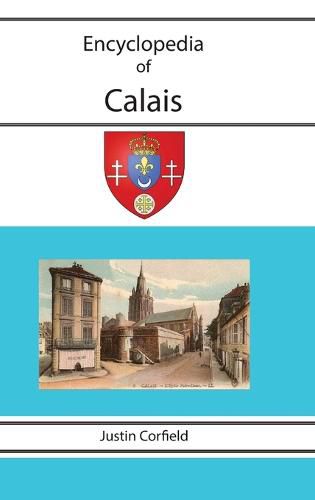Readings Newsletter
Become a Readings Member to make your shopping experience even easier.
Sign in or sign up for free!
You’re not far away from qualifying for FREE standard shipping within Australia
You’ve qualified for FREE standard shipping within Australia
The cart is loading…






This title is printed to order. This book may have been self-published. If so, we cannot guarantee the quality of the content. In the main most books will have gone through the editing process however some may not. We therefore suggest that you be aware of this before ordering this book. If in doubt check either the author or publisher’s details as we are unable to accept any returns unless they are faulty. Please contact us if you have any questions.
On account of its location at the narrowest point in the English Channel, Calais has long been an important transit point for Britons heading to/from the European continent, or for others travelling to/from Britain. This has resulted in Calais being fought over. The English captured the town in 1347 after a long siege, with the surrender involving the Burghers of Calais pleading before King Edward III, the Burghers being commemorated in the famous sculpture by Auguste Rodin.
Calais then remained English, sending two members of parliament to Westminster in the first half of the sixteenth century. It was retaken by the French in 1558; and captured by the Spanish in 1596 - Guy Fawkes using gunpowder in that attack. During the eighteenth century, Calais became the starting place for the Grand Tour with young wealthier Englishmen travelling around Europe. It was a strategic location during the Napoleonic Wars, after which it was a place of refuge for some Britons escaping creditors including Emma Hamilton and Beau Brummell.
After the building of the railways in 1848, most travellers tended no longer to stay overnight in Calais, only making the short journey between the dock and the railway station. The economy stagnated for a period with the lace trade providing much of the employment in the town. In World War II, the British garrison was ordered not to surrender in order to provide more time for other troops to be evacuated at Dunkirk, and in the fighting, most of the old town was destroyed. It was rebuilt after the war; Mme De Gaulle's family owning the local biscuit factory. The beautiful beaches at Calais continue to attract many French from the area during the summer.
The author has visited Calais many times from the age of four, and this book contains more than 700 illustrations and also family trees showing relationships of many people connected with Calais.
$9.00 standard shipping within Australia
FREE standard shipping within Australia for orders over $100.00
Express & International shipping calculated at checkout
This title is printed to order. This book may have been self-published. If so, we cannot guarantee the quality of the content. In the main most books will have gone through the editing process however some may not. We therefore suggest that you be aware of this before ordering this book. If in doubt check either the author or publisher’s details as we are unable to accept any returns unless they are faulty. Please contact us if you have any questions.
On account of its location at the narrowest point in the English Channel, Calais has long been an important transit point for Britons heading to/from the European continent, or for others travelling to/from Britain. This has resulted in Calais being fought over. The English captured the town in 1347 after a long siege, with the surrender involving the Burghers of Calais pleading before King Edward III, the Burghers being commemorated in the famous sculpture by Auguste Rodin.
Calais then remained English, sending two members of parliament to Westminster in the first half of the sixteenth century. It was retaken by the French in 1558; and captured by the Spanish in 1596 - Guy Fawkes using gunpowder in that attack. During the eighteenth century, Calais became the starting place for the Grand Tour with young wealthier Englishmen travelling around Europe. It was a strategic location during the Napoleonic Wars, after which it was a place of refuge for some Britons escaping creditors including Emma Hamilton and Beau Brummell.
After the building of the railways in 1848, most travellers tended no longer to stay overnight in Calais, only making the short journey between the dock and the railway station. The economy stagnated for a period with the lace trade providing much of the employment in the town. In World War II, the British garrison was ordered not to surrender in order to provide more time for other troops to be evacuated at Dunkirk, and in the fighting, most of the old town was destroyed. It was rebuilt after the war; Mme De Gaulle's family owning the local biscuit factory. The beautiful beaches at Calais continue to attract many French from the area during the summer.
The author has visited Calais many times from the age of four, and this book contains more than 700 illustrations and also family trees showing relationships of many people connected with Calais.